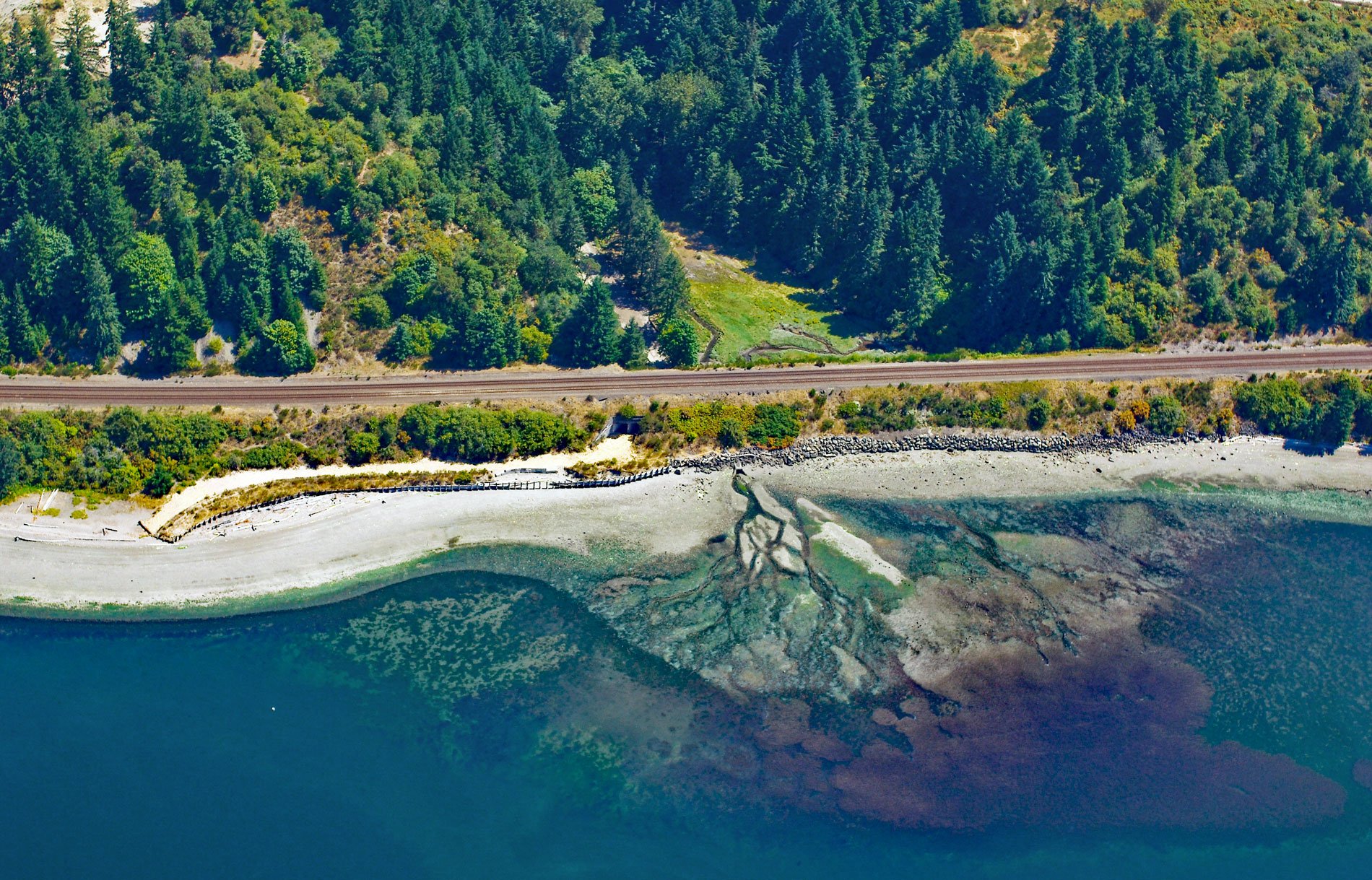Fort Nisqually was a historical trading post established by the Hudson’s Bay Company in 1833 on Sequalitchew Creek, 1.3 miles (2.1 km) east of South Puget Sound at an elevation of 220 feet (67 m), about 14 miles (22.5 km) southwest of Tacoma and 2 miles (3.2 km) northwest of Dupont, Washington. The purpose of the fort was to facilitate fur trading, primarily for beaver pelts, with the Nisqually people and other Native Americans in return for wool blankets, guns, and other manufactured goods. Sequalitchew Creek starts from the outlet of Sequalitchew Lake and flows generally west for 3 miles (5 km) through Edmonds Marsh and a short canyon to Nisqually Reach, draining a watershed of 24,576 acres (9,946 ha). The watershed is formed by sediments deposited during the Vashon Glaciation of the Late Pleistocene period. As Vashon ice moved southward and grounded across the Strait of Juan de Fuca, it dammed the northern outlet of the South Puget Sound basin. Proglacial streams emanating from the ice front carried fluvial sediments southward into the Puget Lowland filling proglacial lakes and eventually the Puget Sound basin, first with silts, then sands and gravels.
The area around the mouth of Sequalitchew Creek, where the fertile plains and salmon-rich rivers provided food, was home to the Sequalitchew-Nisqually people for thousands of years. Carbon dating of shells at a local midden site showed that human life thrived here 5,700 years ago. In 1792, British Captain George Vancouver and his party arrived and explored Puget Sound. In 1832, Archibald McDonald with the Hudson’s Bay Company established a trading post on the beach at the mouth of Sequalitchew Creek and left a contingent to overwinter. The following year, Chief Trader Francis Heron moved the location of the post to the Sequalitchew Prairie high above the beach and began construction of a fort. In 1843, Chief Trader William Tolmie moved the fort again about 1 mile (1.6 km) east to be closer to freshwater. In 1846, the treaty between the United States and Great Britain established the boundary between the two country’s claims at the 49th parallel, leaving Fort Nisqually on American soil. With the fur trade in decline and increasing harassment from American settlers, tax collectors, and revenue agents, Fort Nisqually closed in 1869. A former employee of Fort Nisqually, Edward Huggins, became an American citizen and took over the site as his homestead, and most of the buildings were abandoned.
In 1934, Fort Nisqually was rebuilt at Point Defiance Park near Tacoma. The restoration was part of a Roosevelt New Deal program to provide jobs during the Great Depression. Only two buildings, the granary and factor’s house, were moved from their original locations, the rest having fallen into decay. Today, the restored Fort Nisqually is a living history museum that includes the two original buildings, and a replica trade store, blacksmith shop, laborer’s residence, kitchen, and garden. The original 1833 location of the trading post is now a golf course in Dupont, and the 1843 location is owned by The Archaeological Conservancy. A gravel mine has been operating near the mouth of Sequalitchew Creek since the 1980s and a proposed expansion of 177 acres (72 ha) will involve the removal of 184 acres (75 ha) of forest and topsoil surrounding Sequalitchew Creek. Read more here and here. Explore more of Fort Nisqually and Sequalitchew Creek here:

